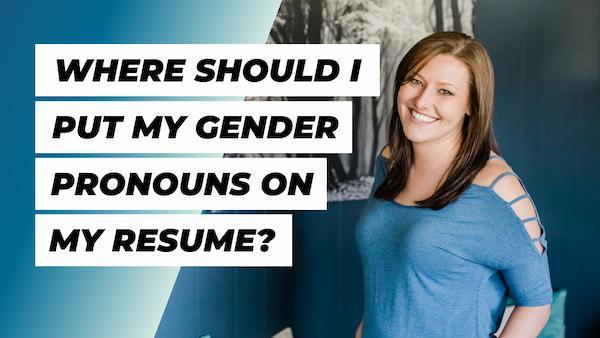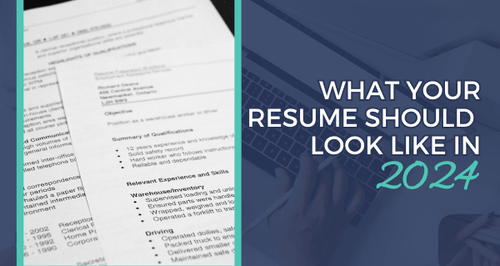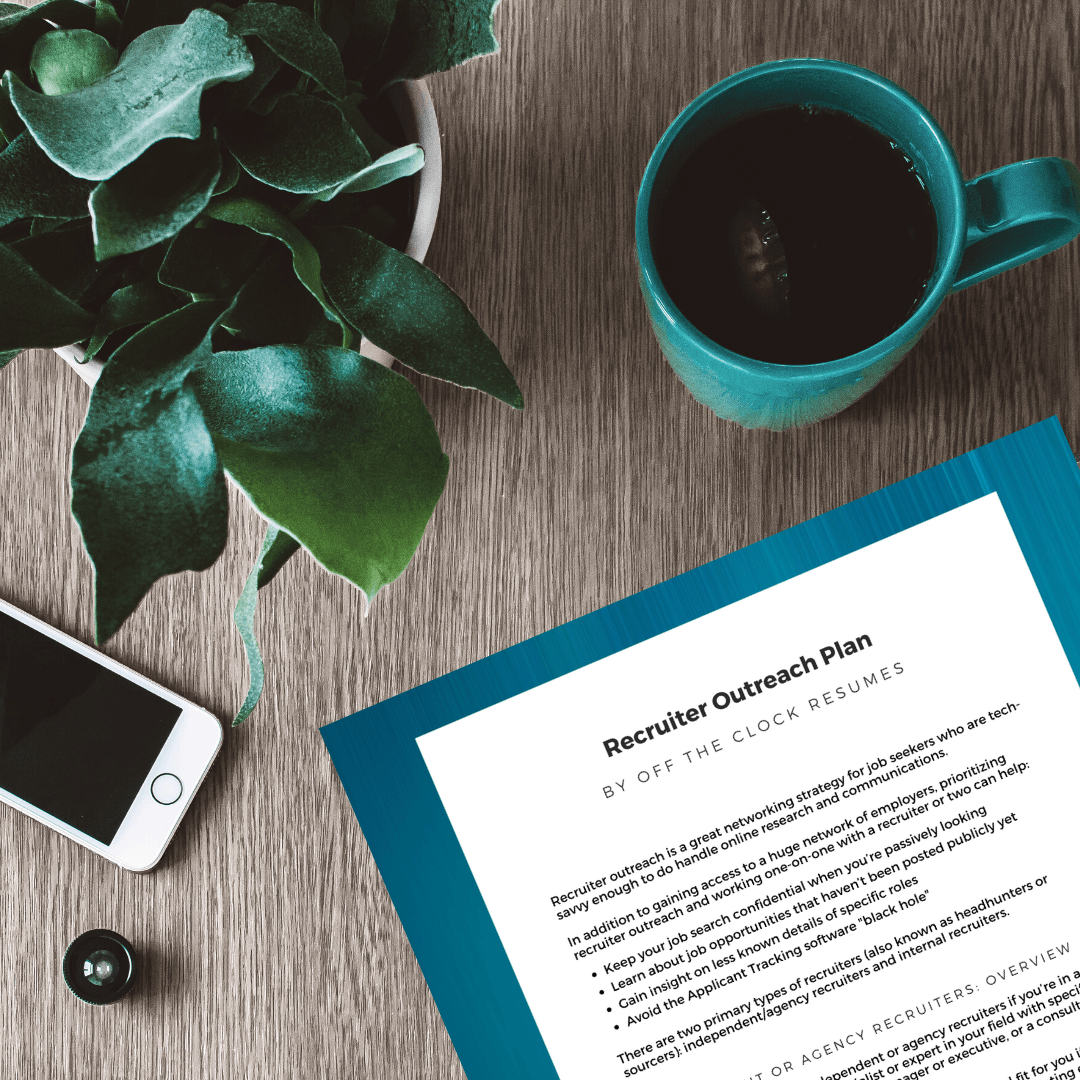
Where Should I Put My Gender Pronouns On My Resume?
Clarifying your chosen gender pronouns in the workplace has been an important initiative in diversity, equity, and inclusion efforts. But where should you put your gender pronouns on your resume?
If you consider how gender pronouns may impact your job search efforts, the quick answer is your pronouns actually don’t belong on your resume.
Today, I’m sharing the potential implications of putting your gender pronouns on your resume and where they are best indicated during your job search. I also clarify where to put your gender pronouns on your resume if you absolutely insist.
This blog contains affiliate links, meaning I may receive a small commission (at no cost to you) if you subscribe or buy something through the links I share. I only share links to products or services that I use myself or absolutely love!
The Different Roles of Resumes and Applications
I won’t be discussing the difference between gender and sex or the various gender pronoun options in this video, but you can visit mypronouns.org for resources on gender pronouns if you’d like more information on these topics.
Instead, I want to start by clarifying the different roles that resumes and online applications play in the hiring process. Your application is a compliance tool that helps recruiters and HR teams align hiring practices with employment laws that protect against discrimination and provide equal employment opportunity. When you’re asked to indicate your gender pronounces in an online application, that information is being used to hold employers accountable for diversity in their hiring practices.
Your resume, however, is a marketing tool that can help YOU present yourself as the best fit for the job. Your resume should include only your top-selling points that relate to the job you're pursuing. The challenge is aligning your career story with what recruiters and hiring decision-makers want to see - which is that you understand and can meet the goals of the role you’re pursuing as well as what value you bring to a team based on past performance.
Bottom line: Your gender doesn’t impact whether or not you can perform the job.
Give employers what they want! This Skills Auditor and bonus Work History Examples Guide helps you organize your skills and translate them into action-oriented statements for your Experience section
Unintentional Biases and Discrimination
Unfortunately, there are unintentional biases that can exist in hiring processes—specifically when your resume and cover letter are being reviewed by a recruiter or hiring decision-maker. I’m sure you’re familiar with many types of bias from unemployment bias to age bias. Gender bias is also a prominent issue that you may not even realize is being provoked by your resume.
For example, your name may be a clear indication of your gender. The use of certain adjectives in resume summaries and even the character or word count of your resume and cover letter can also give unintentional indications of your gender.
Until a new system is developed to minimize biases more, you still need to include your name and contact information on your resume. However, you can do your part to focus your resume on the requirements and desired skills and abilities of the role and minimize details that may provoke unintentional bias and even discrimination.
Where To Put Your Gender Pronouns
If you absolutely insist on putting your gender pronounces on your resume despite these implications, I recommend putting them beneath your name on your resume - not on the same line beside your name. Employer hiring software may not store your name correctly in its database if you place them on the same line.
In addition to indicating your gender pronounces when asked in an online application, you can also add them to your LinkedIn profile. LinkedIn has added a field specifically for gender pronouns to be placed next to your name on your profile, which you can access by editing your Intro on your profile.
You can also indicate your chosen gender pronouns within your email signature to clarify them up-front to recruiters and others on the HR team who may be communicating with you during the hiring process.
Not sure what recruiters and hiring decision-makers want to see on your resume?
You can sign up for my free 5-day Resume Rescue Challenge and discover the updates you can make to your resume today to start landing more interviews.
Related Articles
-

26 Interview and Offer-winning Resume Tips for 2026 and Beyond
Upgrade your resume for 2026 with tips that work from design to keywords and strategies that get interviews. Discover what to fix now and stand out fast!
-

The Perfect Resume Length: One Page, Two Pages, or More?
Confused about the ideal resume length? Discover when to use 1, 2, or even 3+ pages plus get tips to highlight your value and land more interviews.
-

The Harsh Truths About Executive Resumes: What Not to Do
Avoid the most common executive resume mistakes that cost you interviews. Discover actionable resume tips to stand out and land C-level roles.
-

Resume Skills That Get You Hired: What To Include (And What To Skip!)
Discover the top resume skills employers want to see on your resume in 2025. Read or watch to learn how to showcase them to stand out and land more interviews.
-

How To Transform Your Resume Summary From Boring To Brilliant
Transform your resume summary from generic to job-winning! Learn how to write a standout branding statement that grabs attention and lands interviews.
-

The Best Resume Tips for Recent Law School Graduates
Guest contributor Luke Bell shares practical resume tips to help recent law school graduates make a lasting impression on potential employers.
-

What Employers Look For In A Resume Skills Section
Learn which key components of an effective Skills section can indicate to resume screening software and the recruiters behind it which skills are your most recent, relevant, functional job-related skills.
-

What Your Resume Should Look Like In 2024
This comprehensive resume guide shares what the most common resume sections are and what your resume should look like in 2024.
-

Is Jobscan Worth It? Jobscan Review (2024 Update)
Have you heard of Jobscan? Learn more about this keyword analysis tool for job seekers, what it costs, and what Certified Resume Writers both love and hate about it in this in-depth product review.
-

How To Showcase Transferable Skills And Your Value For A Career Transition
Recognizing the significance of transferable skills is key to successfully showcasing one's potential in the face of change.
-

How To Showcase Achievements In Your Cover Letter
Learn how to turn your accomplishments into a compelling personal narrative that showcases the results an employer can expect from you.
-

Why You Should Avoid Resume Builders
Online resume builders are an enticing resume resource, but as a Certified Resume Writer who has tried them out, I recommend avoiding them.
-

ChatGPT Review: Resume Writing Edition
How useful is ChatGPT in crafting a resume that lands interviews and job offers? This review by a Certified Resume Writer isn’t what you’d expect.
















